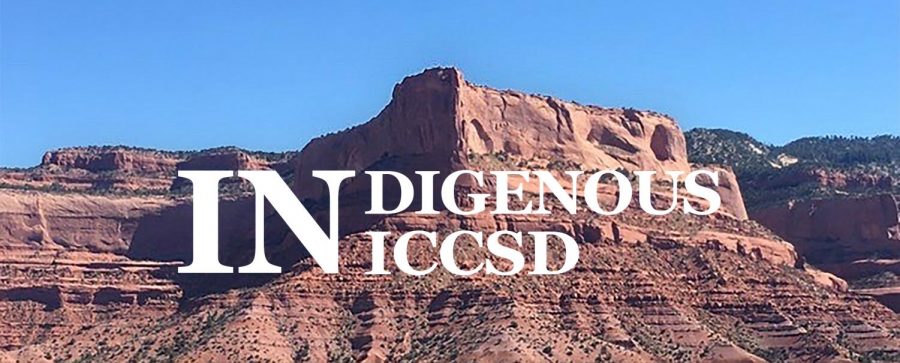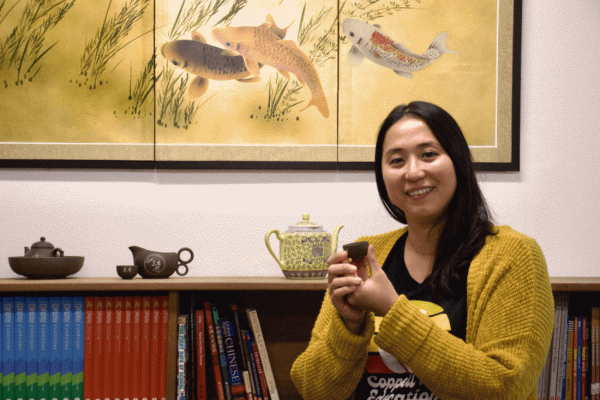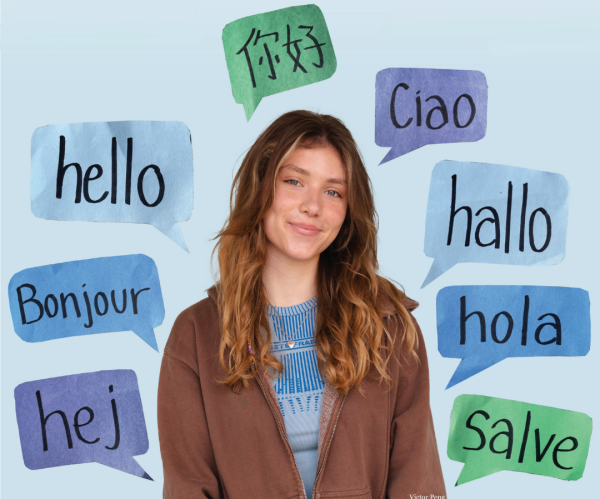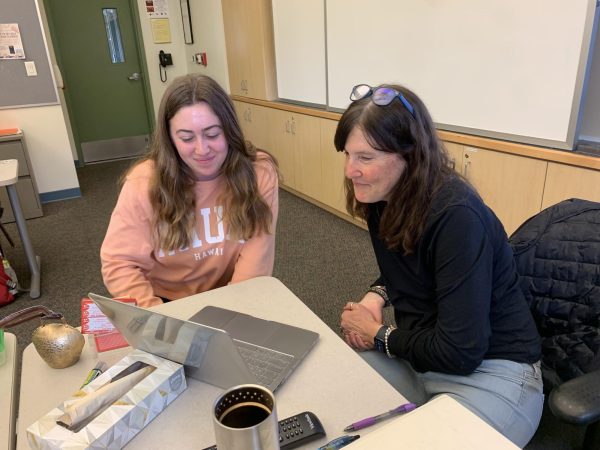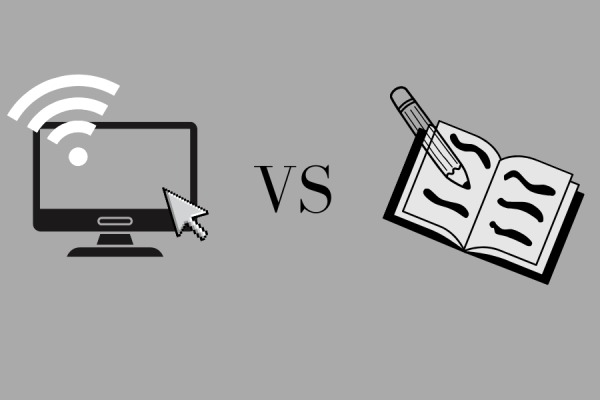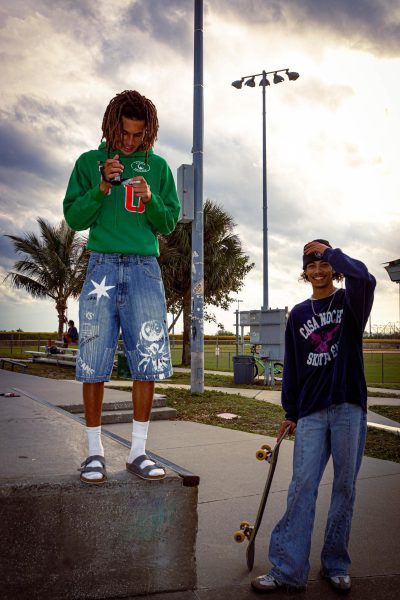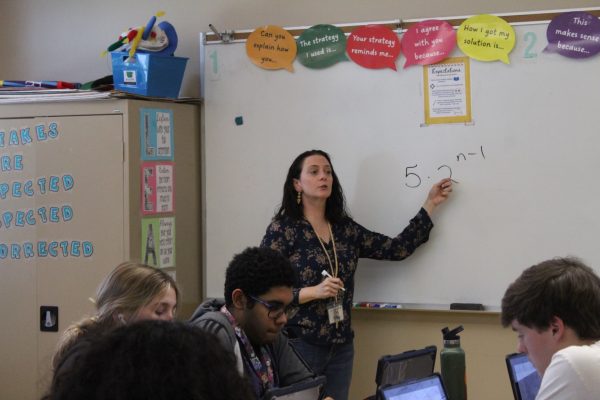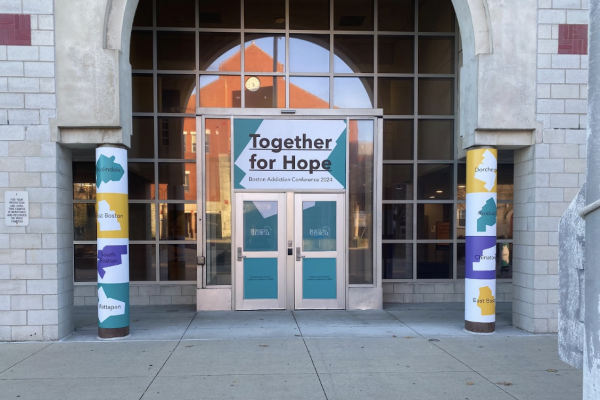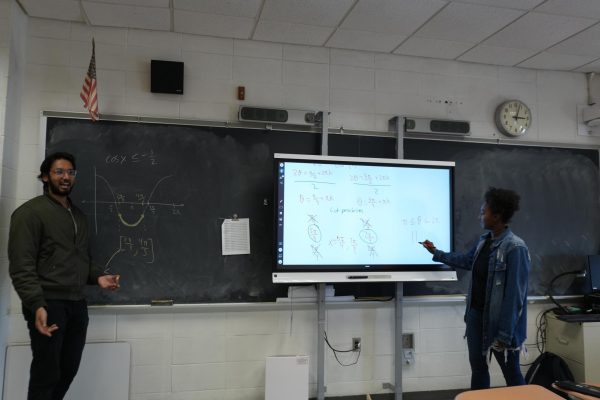Indigenous in ICCSD
With Thanksgiving right around the corner, Indigenous voices share how they feel their culture is represented in the ICCSD and Iowa City community.
November 23, 2020
For centuries, Indigenous peoples in America have been ignored or silenced, from having their land stolen to their culture continuously appropriated. The state of Iowa was named after an Indigenous tribe Bah Koh-Je, whom the Europeans called the Ioway. For the small community of Indigenous students in the ICCSD, this is just one example of their culture being misrepresented.
The individual experience
Claudé Clark ’22 is part of the Mayan tribe, which originated in Central America. According to the Iowa Department of Education, he’s part of the 0.003% of students in the district that identified as Indigenous in 2019. Because of this, Clark feels it can be difficult for Indigenous students to make friends with similar experiences or to form a community.
“Growing up, it was really lonely. First, I lived in a white town, so that didn’t help. Now that I moved to Iowa City, it’s a lot better. I have some friends who are Latino, but that’s different from being Indigenous. It is a different culture,” Clark said. “I still am looking for my place to click in, and it feels like I haven’t really clicked into a place yet where I can truly call home.”
Clark was adopted by a white family and lived in Illinois for much of his childhood before moving to the ICCSD. While he believes that his race didn’t have an effect on how other people treated him, it did affect his perception of himself.
“I would get a lot of compliments about my skin … but I guess for me it was difficult to accept because I didn’t want that. I just want[ed] to look like everybody else because no one … around me looked like me,” Clark said.
I still am looking for my place to click in, and it feels like I haven’t really clicked into a place yet where I can truly call home.
— Claudé Clark '22
Without knowing anyone from his culture or of Indigenous descent, Clark has had to learn about his culture by himself using resources he finds on the internet.
Growing up with Indigenous parents, Loren Wolf ’23 has had a different experience. He stays connected to his Indigenous roots by practicing the cultures of the tribes he descended from. To do this, he is learning the Navajo language from his mother’s side of the family and takes part in many traditions of the Meskwaki at the reservation in Tama, Iowa, where his father lives.
“My dad started putting me in something called a powwow, which is basically just honoring the relatives by doing specific dances … I used to do those a lot [before the pandemic],” Wolf said.
According to Clark, being able to partake in these kinds of experiences can be important and empowering for people of Indigenous descent.
“The Meskwaki nation is [called] the Sac and Fox tribe of the Mississippi in Iowa … They have their own reservation, and they have their own community,” Clark said. “I really want to go down there and … experience what it’s like to be Native American, even if they’re not exactly my tribe.”
While Clark values cultural experiences, he thinks it is important that representation comes with the right intentions. He believes there is a fine line between cultural appreciation and appropriation, with one commonly appropriated term being “two-spirit.”
The term signifies a member of a tribe who identifies as neither a man nor a woman and has many unique roles in the group. However, some non-Indigenous members of the LGBTQ+ community have begun using the term to describe themselves.
“It kind of makes me upset whenever someone says, ‘Oh, I’m a two-spirit’ … when they’re non-Indigenous. I don’t get mad at them, it just makes me sad that they think this is okay. Some part of their brain thought, ‘This is okay to call myself this, to take this from the different tribes, different cultures, and put it on me when I don’t know anything about what that word actually means,’” Clark said.
Clark attributes the cultural appropriation and microaggressions he has seen to a lack of knowledge about Indigenous peoples and their cultures.
“Eventually, people will have respect for us, but [currently] a lot of people are just ignorant,” Clark said. “They just don’t know. They aren’t taught.”
Eventually, people will have respect for us, but [currently] a lot of people are just ignorant. They just don’t know. They aren’t taught.
A common cause of confusion is what terms should be used to refer to Indigenous peoples. This varies around the world, according to Jacki Thompson Rand, a professor of history and Native American and Indigenous studies at the University of Iowa. Indigenous peoples are referred to as Aborigine in Australia and as the First Nations in Canada. In America, however, there is no universally accepted term for Indigenous peoples.
“It’s a little bit different for everyone but it’s mostly like keep away from slurs, even if they don’t sound like slurs to you … A good way to just be safe would be to call them Indigenous or ask what tribe they’re from,” Clark said. “I think it’d be fine to just ask them, ‘Okay, do you prefer to be called Indian or whatever?’ … It is better someone asked than for us to be offended.”
The current curriculum
During their four years at West, students are required to take at least three years of social studies classes, including one year of American history. Clark, who has moved multiple times in his life, believes none of his schools covered Indigenous peoples’ history in-depth and feels his community is overlooked in the curriculum.
“[Indigenous history is] not really talked about at all, besides U.S. history and the Seven Years War and stuff like that,” Clark said.
Indigenous people is a pretty big subject, and considering how big it is, I know pretty much almost nothing about it. We did not generally learn about tribes because we were busy learning about the states.
— Alexandra Patrick-Ferree
In the ICCSD, fifth grade is the designated year students learn about early U.S. history at the elementary school level. Alexandra Patrick-Ferree ’27 is a sixth grader at Alexander Elementary. In her experience so far, there has also been little information on the history or cultures of Indigenous people.
“Indigenous people is a pretty big subject, and considering how big it is, I know pretty much almost nothing about it,” Patrick-Ferree said. “We did not generally learn about tribes because we were busy learning about the states.”
According to Brady Shutt, the ICCSD social studies curriculum coordinator, this is because the social studies curriculum at the elementary school level follows a unique structure.
“In the beginning, it’s this sort of family, neighborhood, community [structure] if you think about it as a circle that spreads wider and wider as students learn,” Shutt said. “But it’s not a lot of civics lessons and things like that, so it isn’t like they’re studying history the way you might think about it as a high school student.”
While past students may have celebrated Columbus Day, this year, Patrick-Ferree and her classmates researched Indigenous history in celebration of Indigenous Peoples’ Day. However, these changes haven’t spread to high schools, where neither Clark nor Wolf talked about the holiday in any of their classes.
“A lot of people, especially Americans, are very … hesitant and reluctant to change,” Clark said. “I don’t really expect much progress.”
According to Wolf, even when Indigenous history is taught, it can easily be one-sided.
“I kind of feel like in history … [Indigenous people were] treated as a conflict and just as an obstacle that [European explorers] had to go through,” Wolf said. “In the Native American tribe[s’] perspective, it makes more sense because then it’s just people trespassing. They don’t exactly know if they’re a threat or not. Through their perspective it’s really just, ‘Do we let these random people go through our land?’”
Sara Schupanitz, a fifth-grade teacher at Borlaug Elementary, also recognizes that it’s important to be mindful of the perspective from which history is being taught.
I kind of feel like in history … [Indigenous people were] treated as a conflict and just as an obstacle that [European explorers] had to go through.
— Loren Wolf '23
“I don’t think we give enough spotlight to the non-white perspective of history. I think the white history is told and that we really need to take a critical look at the other … cultures that are involved in that,” Schupanitz said. “I think we need to take another look at that lens, ‘What are we teaching?’ and ‘What impact is that having on their mindsets moving forward?’”
Tyson Smith, the head of the social studies department at West, agrees there are still improvements to be made regarding Indigenous representation in the curriculum.
“[I do think Indigenous culture is represented in the ICCSD curriculum] but probably not as much as it should be,” Smith said. “As a society and personally as a teacher, we’ve learned a lot about the importance of having cultures represented in the curriculum.”
Schupanitz and her fellow fifth-grade teachers throughout the district are responsible for being many students’ first introduction to these aspects of American history. In her experience, teachers have found many ways to introduce their students to other perspectives relevant to the topic of colonization. She does this by beginning the unit with the book “Encounter,” a story of Columbus’s interactions with Native Americans that is narrated by an Indigenous person.
“A lot of times, kids [do] not understand how bad Columbus was … so that kind of blows their minds when we talk about it,” Schupanitz said. “[One of my colleagues] puts Christopher Columbus on trial … [and the students] have to call in character witnesses and things, so they have to think about the different perspectives of colonization.”
Representation isn’t only a focus for those teaching history. Wolf’s eighth-grade English teacher introduced him to a book called “The Absolutely True Diary of a Part Time Indian” by Sherman Alexie, a story told from the perspective of an Indigenous teenage boy living on a reservation in Washington state.
“It was nice to hear a first person narrative of the misadventures of someone who I would’ve been in the shoes of if I didn’t move to Iowa … It provides a perspective of what a life of an Indian high schooler is like,” Wolf said.
Tom Lindsey, an English teacher at West, uses the novel “There There” by Tommy Orange, a Cheyenne and Arapho author, to help his students examine the American dream through the perspectives of marginalized groups. The book follows a cast of Indigenous characters living in Oakland, California and showcases what it’s like to be an Indigenous person residing in urban areas of the U.S.
“A major part of this unit stems from Ralph Ellison’s ‘Invisible Man’ and focuses on how literature and forms of expression are used to shed light on the invisible aspects of mainstream culture. ‘There There’ provides students with a springboard to unpack Native culture and what role Indigenous people play in shaping our contemporary culture through the amplification of Tommy Orange’s powerful literary voice,” Lindsey said.
Making changes
At the district level, the ICCSD is working to remedy these gaps in the curriculum. Shutt has assembled a team of staff members to begin the curriculum review process.
“[About every] 10 years, the curriculum coordinators help to do a curriculum review process that looks at and involves the self-study of the curricular program. [This is made possible] with a team of people that then evaluate data, look for strengths and limitations of the program and then develop a plan of action for the following eight to 10 years,” Shutt said.
The team of curriculum coordinators is composing a survey to send out to students, parents, guardians, staff and community members. This survey will be sent out to the public by the end of 2020. Shutt has made it a goal to improve the standard curriculum to be more representative.
“One of my hopes for the curriculum review process is that we continue our work to make sure that students see themselves represented in our curriculum and that we teach in a culturally responsive and efficient manner and that we continue to have [a] curriculum that represents the amazing diversity of the Iowa City Schools and Johnson County,” Shutt said.
In order to meet these goals, this year the ICCSD is not teaching the chapter about slavery in the fifth-grade curriculum.
“We aren’t teaching chapter eight in our social studies [class] right now … Most textbooks are written from a white narrative, and it’s told with a different lens than what we need to look through … So we need to rethink what that looks like in the classroom. How do we express what slavery is to the students and really paint a picture of what happened and how there really wasn’t a choice for them?” Schupanitz said.
One of my hopes for the curriculum review process is that we continue our work to make sure that students see themselves represented in our curriculum and that we teach in a culturally responsive and efficient manner.
— Brady Shutt, ICCSD social studies curriculum coordinator
While Clark believes there are some problems with the current curriculum, he wishes people would take the initiative to learn more about Indigenous culture and history themselves.
“I had to learn all this stuff on my own, and I do wish schools did talk about it, but it shouldn’t be solely the school’s purpose,” Clark said. “It should be other people wanting to actually learn about [the] culture around us and wanting to have respect.”
One opportunity individuals have to educate themselves is through the Native American and Indigenous studies course offered at the University of Iowa. The program was established in the mid-90s through the efforts of professors who taught in the related fields of American Indian law, anthropology and English.
The Native American Student Association, Native American Council and Native American and Indigenous studies department are working at the University of Iowa in an attempt to counter the erasure of Indigenous peoples by offering courses and public programs, such as their annual powwow. Kelly Clougher, president of the Native American Council, believes it is important to publicize Indigenous culture.
“Our main goals remain the same: recruit and retain Native American students, faculty and staff. We also want to continue building awareness of Native culture on campus and in the community … to let people know we are here, our culture is beautiful and vibrant and we matter,” Clougher said.
Although Rand recognizes these efforts are being made, she believes more representation in the program is needed.
“Additional Indigenous faculty and staff at the University are a necessary step in raising awareness of Indigenous history and culture,” Rand said. “Because our numbers are so small, we cannot make meaningful change in terms of representation. We also need allies to work with in addressing underrepresentation.”
To combat the lack of representation in the ICCSD curriculum, Clark wants to create a session to discuss Indigenous peoples’ cultures for the West High celebration of Martin Luther King Jr. Day. The event began in 2018 as a response to the previous year’s climate survey in which minority students reported feeling underrepresented. The MLK Day celebration was designed so students could learn about different cultures and ideas.
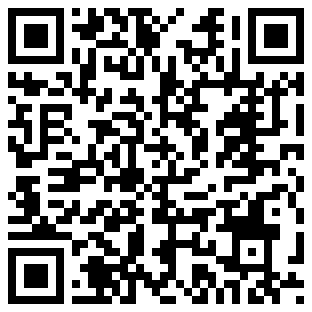
“Not fully knowing who you are is really rough for people and [not knowing] where you came from [and] what your culture is,” Clark said. “I also want to just bring it to the surface and have more conversations about it because we don’t have enough conversations about stuff like this.”
Similar to Rand, Clark believes that Indigenous representation should be more common.
“Our voices are not being heard. There are many other voices being shouted over ours,” Clark said. “There are a lot of people and a lot of places that are really trying to get Indigenous peoples’ voices heard, and they are doing a really great job, but I feel like they need more love.”
This story was originally published on West Side Story on November 20, 2020.



























![IN THE SPOTLIGHT: Junior Zalie Mann performs “I Love to Cry at Weddings,” an ensemble piece from the fall musical Sweet Charity, to prospective students during the Fine Arts Showcase on Wednesday, Nov. 8. The showcase is a compilation of performances and demonstrations from each fine arts strand offered at McCallum. This show is put on so that prospective students can see if they are interested in joining an academy or major.
Sweet Charity originally ran the weekends of Sept. 28 and Oct. 8, but made a comeback for the Fine Arts Showcase.
“[Being at the front in the spotlight] is my favorite part of the whole dance, so I was super happy to be on stage performing and smiling at the audience,” Mann said.
Mann performed in both the musical theatre performance and dance excerpt “Ethereal,” a contemporary piece choreographed by the new dance director Terrance Carson, in the showcase. With also being a dance ambassador, Mann got to talk about what MAC dance is, her experience and answer any questions the aspiring arts majors and their parents may have.
Caption by Maya Tackett.](https://bestofsno.com/wp-content/uploads/2024/02/53321803427_47cd17fe70_o-1-1200x800.jpg)
![SPREADING THE JOY: Sophomore Chim Becker poses with sophomores Cozbi Sims and Lou Davidson while manning a table at the Hispanic Heritage treat day during lunch of Sept 28. Becker is a part of the students of color alliance, who put together the activity to raise money for their club.
“It [the stand] was really fun because McCallum has a lot of latino kids,” Becker said. “And I think it was nice that I could share the stuff that I usually just have at home with people who have never tried it before.”
Becker recognizes the importance of celebrating Hispanic heritage at Mac.
“I think its important to celebrate,” Becker said. “Because our culture is awesome and super cool, and everybody should be able to learn about other cultures of the world.”
Caption by JoJo Barnard.](https://bestofsno.com/wp-content/uploads/2024/01/53221601352_4127a81c41_o-1200x675.jpg)




